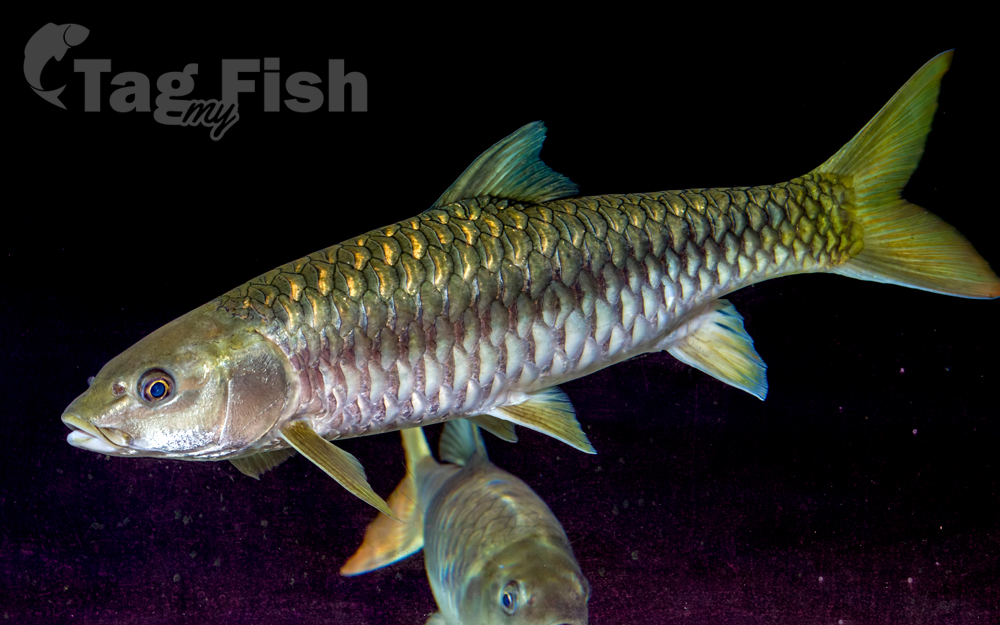Golden mahseer
(Tor putitora)

Classification
Tor putitora, the Putitor mahseer, Himalayan mahseer, or golden mahseer, is an endangered species of cyprinid fish that is found in rapid streams, riverine pools, and lakes in the Himalayan region. Its native range is within the basins of the Indus, Ganges and Brahmaputra rivers.
It is a popular gamefish, once believed to be the largest species of mahseer, and can reach up to 2.75 m (9.0 ft) in length and 54 kg (119 lb) in weight, though most caught today are far smaller.
It is threatened by habitat loss, habitat degradation and overfishing, and it already has declined by more than an estimated 50%. This omnivorous species is generally found near the surface in water that ranges from 13 to 30 °C (55–86 °F).
Its caudal, pelvic, and anal fins show a tint of reddish-golden colour. While the body above its lateral line is generally golden in colour at adulthood, the gold colour might be absent in young specimens.
The largest head of any mahseer species, with a large mouth and prominent lateral line stripe, are features considered to be important in the correct identification of this species. A cavefish species found in Meghalaya in India is likely derived from this species.
The Himalayan Golden Mahaseer is the National fish of Pakistan. It is also the state fish of the states of Arunachal Pradesh, Himachal Pradesh, Uttarakhand and the UT of Jammu and Kashmir
Releases beyond native range
Recent releases of artificially bred stock have been into the Irrawaddy River basin in Nagaland, India and, through the Indo-German Biodiversity Programme releases into the Hira Bambai reservoir and small streams around Melghat Tiger Reserve, part of the Tapti River basin. The effect of releasing fish from a different river basin, well outside its native range is uncertain. That these fish are being released over a ten-year period, with as many as 10,000 in each batch, must be considered a huge threat to the native mahseer and other fish species.










